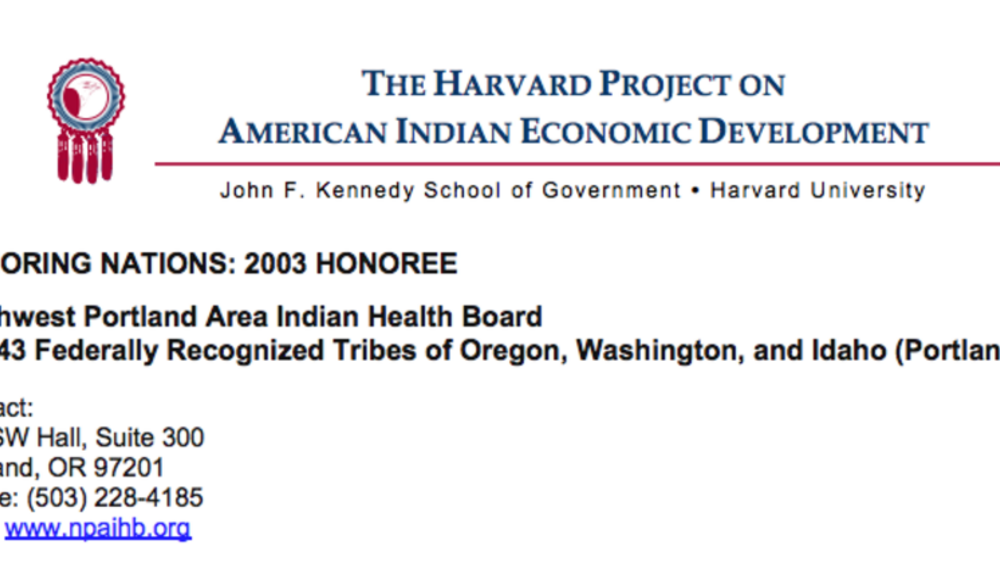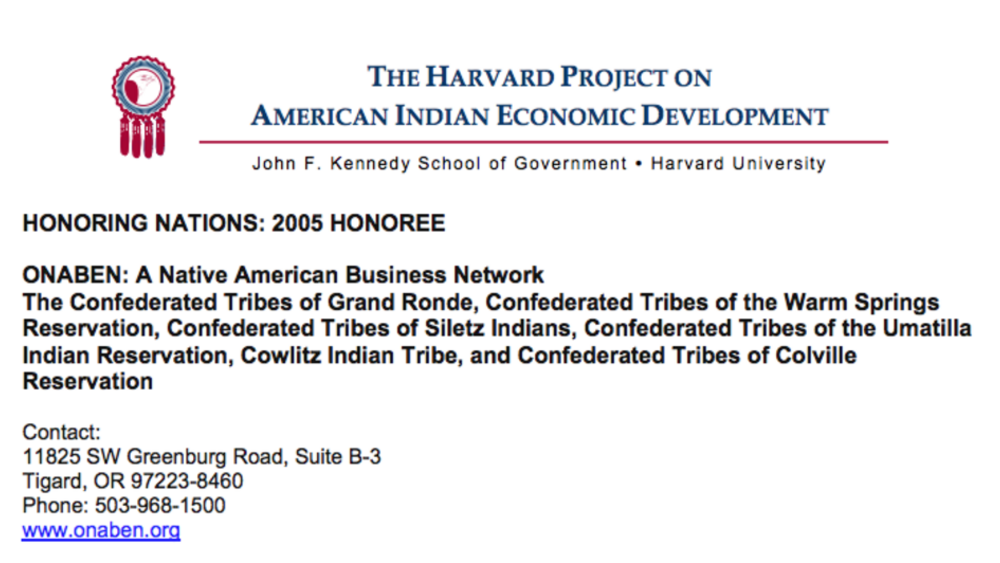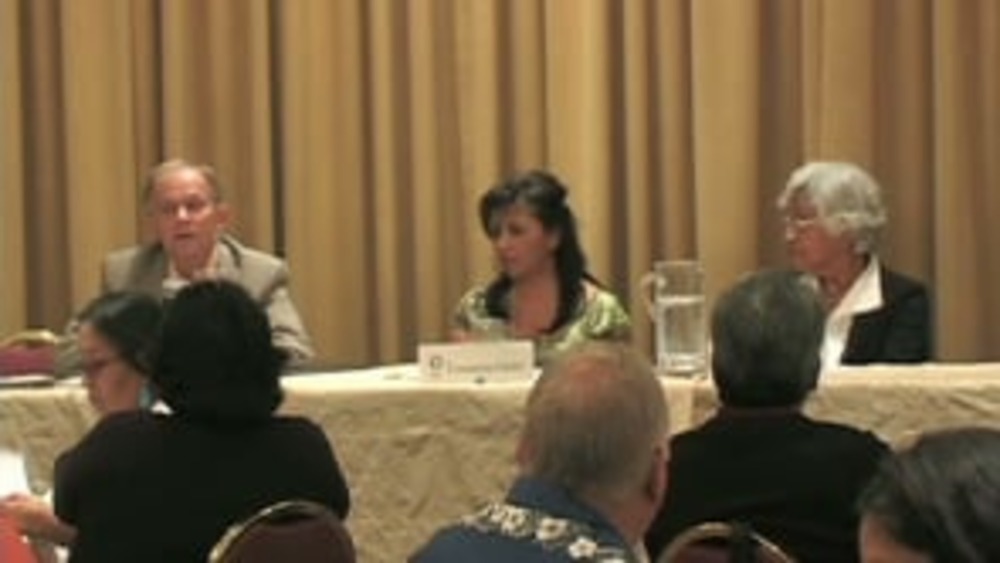Indigenous Governance Database
Cowlitz Indian Tribe
Thumbnail or cover image

Northwest Portland Area Indian Health Board
Serving tribes in Oregon, Washington, and Idaho, the Northwest Portland Area Indian Health Board (NPAIHB) was created in 1972 to increase tribes’ ability to exercise control over the design and development of tribal health care delivery systems. Governed by tribal government delegates, NPAIHB…
Thumbnail or cover image

ONABEN: A Native American Business and Entrepreneurial Network
Founded by a consortium of Native nations in the Pacific Northwest, ONABEN's mission is to increase self-reliance by promoting the development of tribal-citizen-owned small businesses and the diversification of reservation economies. ONABEN's programs provide financial counseling, business…
Thumbnail

Honoring Nations: Tom Hampson: Native Asset Building (Q&A)
ONABEN Executive Director Tom Hampson fields audience questions about ONABEN's work and strategies for cultivating entrepreneurship in Indian Country.
